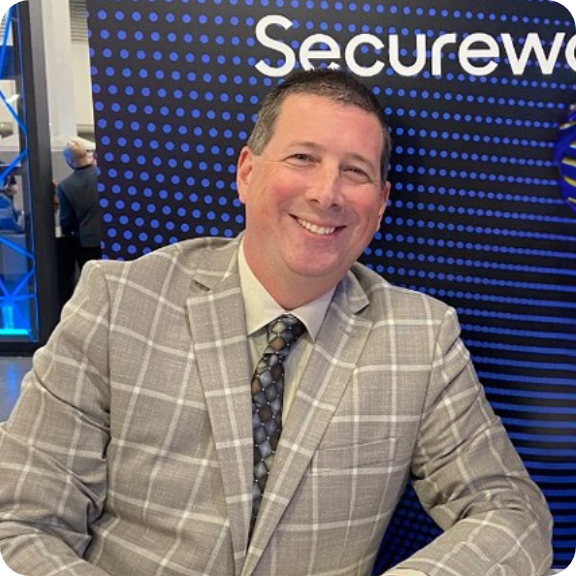Your cart is currently empty!
PEDs: The Silent Threat to SCIFs and Secure Data Centers — And How to Fight Back

In today’s hyper-connected world, where convenience and connectivity dominate both personal and professional spaces, personal electronic devices (PEDs) such as AirPods, smartphones, smart tags, and IoT gadgets have become part of our daily routine. While these devices provide productivity and ease of access in everyday life, they also pose serious security threats when introduced into environments designed to handle sensitive or classified information.
Sensitive Compartmented Information Facilities (SCIFs) and secure data centers exist to protect national secrets, critical infrastructure data, intellectual property, and confidential communications. Unfortunately, these highly protected zones are vulnerable to the silent and often underestimated threat posed by modern PEDs. What appears to be a harmless accessory—like a Bluetooth earbud—can actually be a covert surveillance tool, a wireless exfiltration device, or even a location-tracking beacon. This threat is not theoretical; it is real, growing, and requires immediate and proactive countermeasures.
SCIFs are meant to be airtight information vaults. Yet even the most secure facilities face insider risks—contractors, employees, or visitors unintentionally (or maliciously) carrying devices that can transmit wireless signals or record sensitive conversations. AirPods and similar Bluetooth-enabled devices are particularly concerning. These products contain built-in microphones that, if hijacked by malware, can secretly record and transmit audio. They also maintain Bluetooth Low Energy (BLE) connections that can facilitate data leakage, even when the devices seem dormant. In some cases, they remain invisibly connected to smartphones or tablets nearby, forming a covert link to the outside world. A June 2025 study demonstrated that smartwatches can be used to exfiltrate data from air‑gapped systems via ultrasonic channels.
Lawmakers warn of mobile phone threats in SCIFs as well. A CyberScoop article reported concerns from a bipartisan pair of lawmakers about mobile phones entering SCIFs—prompting the Senate Sergeant at Arms to track breaches. One representative recounted his phone returning from Eastern Europe with Russian malware, forcing a full wipe of the device.
Another growing concern is the rise of location-tracking tags such as Apple AirTags and Tile devices. These small gadgets continuously emit BLE signals and are commonly used for asset tracking. However, they can be exploited to track personnel, map facility layouts, or monitor patterns of movement within restricted zones. Malicious actors can discreetly place one of these tags near or on a target and gain real-time intelligence without ever setting foot inside a secure facility.
Wi-Fi and cellular-enabled devices like smartphones, tablets, and smartwatches introduce additional risk. These devices often operate across multiple frequencies, including 2.4 GHz, 5 GHz, and sub-6 GHz bands, and are capable of connecting to rogue access points or cellular networks. Even innocuous devices like fitness trackers can open side channels for information leakage via passive syncing or unauthorized data transfers.
Wearables devices such as Apple Watches are also slipping into SCIFs. Even well‑meaning cleared professionals have triggered violations simply by forgetting to remove them. An industry article highlighted how military and cleared personnel frequently enter secure zones with Apple Watches inadvertently—triggering security violations.
Thankfully, the threat posed by PEDs has not gone unnoticed at the highest levels of government and defense. A series of federal directives and compliance requirements have been enacted to mitigate these risks. The Intelligence Community Directive 705 (ICD 705) sets the physical and technical standards for SCIFs, explicitly prohibiting unauthorized PEDs and requiring strict control and monitoring of all wireless activity. The Department of Defense Manual 5200.01 reinforces the need for Technical Surveillance Countermeasures (TSCM) to detect and eliminate any devices capable of emitting or receiving unauthorized signals. Moreover, emission security guidelines from the Committee on National Security Systems (CNSS) emphasize the need to control even unintentional RF emissions, which can be just as dangerous.
These regulations make one point abundantly clear: It is not enough to ban devices by policy alone. Facilities must actively monitor, detect, and neutralize unauthorized transmissions. Security isn’t just about locking doors; it’s about being aware of what’s happening in the invisible RF spectrum all around us.
Unfortunately, ignorance isn’t a valid defense. A contractor walking into a SCIF with active AirPods or a synced smartwatch—whether knowingly or not—represents a breach. Whether data is actually leaked or not, the violation of protocol is grounds for investigation and could open the door to catastrophic losses.
This is why proactive wireless monitoring is not just useful—it’s essential. Enter the Yorkie-Pro and WallHound-Pro from Berkeley Varitronics Systems, two purpose-built tools that empower security teams to detect, identify, and respond to threats from PEDs before damage is done.


The Yorkie-Pro is a portable RF detection device that scans for Wi-Fi, Bluetooth (both BLE and classic), and cellular signals. It acts like a digital bloodhound, pinpointing the exact location of unauthorized devices using direction-finding antennas and real-time signal analysis. It doesn’t just tell you that something is wrong—it tells you where and what it is. Whether you’re conducting a routine sweep of a SCIF or investigating a suspected leak, the Yorkie-Pro provides the actionable intelligence needed to secure the environment.
On the other hand, the WallHound-Pro is designed for real-time, automated detection. Installed at entry points or high-security areas, it continuously monitors for rogue devices. When a prohibited device is detected—whether it’s BLE from a smart tag, a cellular ping from a smartwatch, or Wi-Fi emissions from a mobile hotspot—it triggers audible and visual alerts. This instant feedback allows staff to intervene immediately, preventing unauthorized devices from entering sensitive areas.
To understand the impact of these tools, imagine a scenario in which an employee unknowingly walks into a SCIF with a smartwatch still connected to their phone. That BLE connection is a live transmission that violates SCIF policy. Without monitoring tools, the violation goes undetected. But with WallHound-Pro at the door, an alert is triggered. Security staff are notified, and the device is removed before it poses a threat. Multiply this situation across hundreds of entries per day, and the value of real-time detection becomes undeniable.
In today’s threat landscape, where even the smallest device can be weaponized to steal secrets or disrupt operations, vigilance is not optional. It’s imperative. Policies are a starting point, but they must be enforced with visibility and actionable intelligence. The threats are evolving. So too must our defenses.
Tools like the Yorkie-Pro and WallHound-Pro don’t just fill a gap—they establish a new standard for proactive security. They offer SCIF managers, IT teams, and security professionals a reliable way to enforce compliance, mitigate risk, and protect what matters most.
In high-security environments, you don’t get a second chance. Once data is lost, there’s no getting it back. Don’t leave security to chance—monitor, detect, and act before it’s too late.
Want to see how these tools can protect your facility? Contact Berkeley Varitronics Systems today for a live demo at 732-548-3737 or sales@bvsystems.com.

Scott Schober
CEO | Author | Speaker at Berkeley Varitronics Systems
Scott Schober presents at cybersecurity and wireless security conferences for banking, insurance, transportation, construction, telecommunications and law enforcement industries. He has overseen the development of dozens of wireless test, security, safety and cybersecurity products used to enforce a “no cell phone policy” in correctional, law enforcement, and secured government facilities. Scott regularly appears on network news programs including Fox, Bloomberg, Good Morning America, CNN, MSNBC, NPR and many more. He is the author of 'Senior Cyber', 'Cybersecurity is Everybody's Business' and 'Hacked Again', the “original hacker’s dictionary for small business owners” - Forbes Magazine.
Latest Posts
Have questions?
Berkeley sales and engineering staff will answer all of your technical, delivery and pricing questions. Contact us today.







Leave a Reply